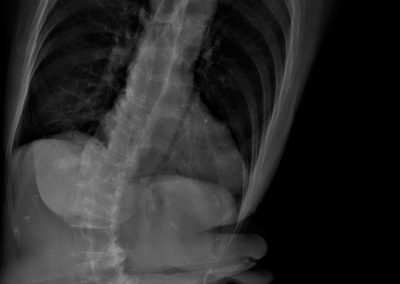Scoliosis
Definition of a Scoliosis
Causes
The cause of the most frequent type of scoliosis (idiopathic adolescent scoliosis) is still unknown. The idiopathic scoliosis mostly occurs in young girls around puberty at the peak of their growth spurt. Other causes are congenital malformations (congenital scoliosis), metabolic diseases like rickets or osteoporosis (metabolic scoliosis), severe degenerative changes in the spine of the elderly (adult scoliosis) and discrepancies of leg length (static scoliosis).
Treatment
Less severe curvatures can be treated conservatively, i.e gymnastics or bracing.
Failure of conservative therapy and rapid progression of the curvatures have to be treated surgically to improve cosmesis or quality of life.
Surgical treatment consists of fusion and correction of the curvatures.
Failure of conservative therapy and rapid progression of the curvatures have to be treated surgically to improve cosmesis or quality of life.
Surgical treatment consists of fusion and correction of the curvatures.
Post-surgical course
Mostly, patients must remain in the intensive care unit for a few days. Young patients may leave the hospital approximately one week after surgery, whereas older patients must follow an intensive rehabilitation program.
Results
Although surgeries are demanding and have long durations, patients profit.
In young patients good cosmetic results are achieved, as rib humps and trunk deformities are improved.
In elderly patients, even though revision surgery may be required, quality of life improves as pain is diminished and trunk deformities are reduced.
In young patients good cosmetic results are achieved, as rib humps and trunk deformities are improved.
In elderly patients, even though revision surgery may be required, quality of life improves as pain is diminished and trunk deformities are reduced.

